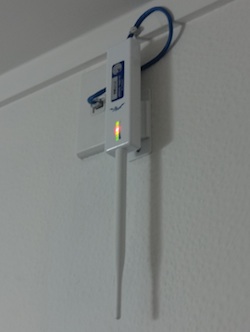
Honest, the label on the box says it’ll do a gozangabit!
The federal housing and urban development department is floating new rules for publicly subsidised housing – but not homes bought with FHA loans or other federal loan guarantees – that would require installation of broadband infrastructure in new or remodelled multi-dwelling units. It’s a good new/bad news rule: it uses the FCC’s definition of high speed broadband, but leaves plenty of room for implementation mischief…
HUD is proposing to define broadband infrastructure as cables, fiber optics, wiring, or other permanent infrastructure, including wireless infrastructure, as long as the installation results in broadband infrastructure in each dwelling unit meeting the definition created by the Federal Communications Commission (FCC), which currently is 25 Megabits per second (Mbps) download, 3 Mbps upload.
On the one hand, it encourages the installation of proper ethernet or, alternatively, coaxial cable facilities. On the other, it opens the door to the legion of salesmen pushing magic radios to technologically unsophisticated property owners.
There are also a few loopholes in the proposed rules…
If the housing is a building with more than 4 rental units, any substantial rehabilitation…must provide for installation of broadband infrastructure…except where the grantee documents that:
(A) The location of the substantial rehabilitation makes installation of broadband infrastructure infeasible;
(B) The cost of installing broadband infrastructure would result in a fundamental alteration in the nature of its program or activity or in an undue financial burden; or
(C) The structure of the housing to be substantially rehabilitated makes installation of broadband infrastructure infeasible.
Substantial rehabilitation includes substantial electrical work, whether there’s other renovation involved or not. Infrastructure and service are not linked – there’s no requirement to light it up, or offer it on a subsidised basis.
The proposed federal technical specs are way better than the ones adopted by the California Public Utilities Commission for its public housing broadband facilities subsidy program. It set a pathetic 1.5 Mbps download minimum, and no standards at all on the upload side. Experience with that program shows that wireless cowboys will chase the money, and grab it regardless of long term consequences.
There’s a two month or so window to make comments before anything is finalised.
